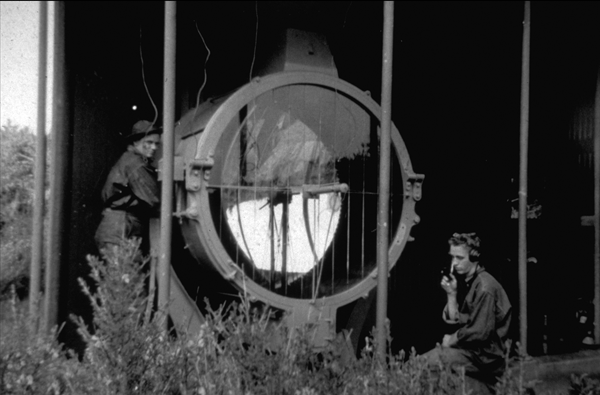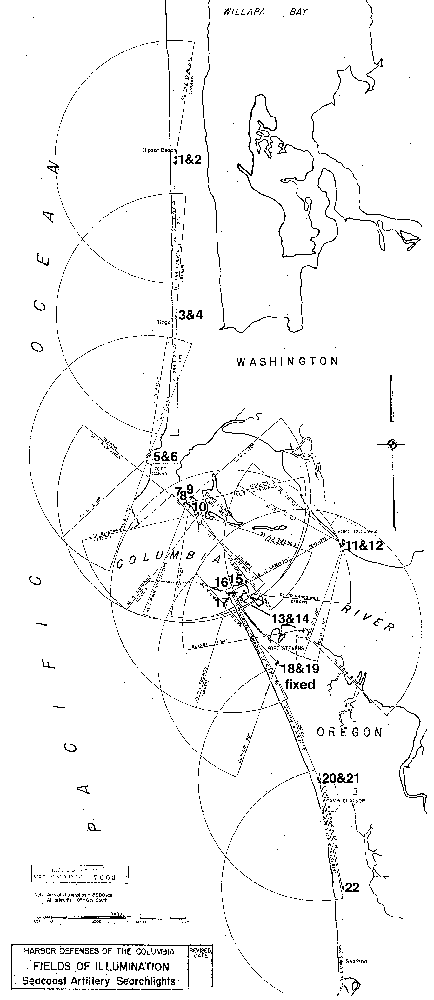Coast Artillery: Searchlights

searchlight at Fort Stevens jetty
By the time of the Taft Board Report in 1906, the importance and use of searchlights was of a high priority. The Board recommended the installation of 36-inch and 60-inch searchlights and their electrical plants at all defended harbors, after their proper location was determined by trial. A few years later, it was realized that the 36-inch searchlight was not powerful enough for use and the 60-inch light became the only one suitable.
Many of the searchlights installed during the period 1901-1917 were fixed, that is located in a structure of some sort for concealment during the day, with their electrical generator. The Army also examined mobile searchlight models as well; the searchlights and electrical generators made to be carted by trucks and set up at a predetermined position. Over the years, the mobile searchlights became more reliable, durable, and rugged. By the late 1930s, the Coast Artillery switched to using mobile searchlights and replaced fixed searchlights where at all possible. During World War II, the US seacoast defenses used mostly mobile searchlights.
TACTICAL EMPLOYMENT OF SEARCHLIGHTS
MEANS OF ILLUMINATION. Three means of securing illumination of water areas and targets at night are search-lights, star shells, or airplane flares. Successful defense against naval attack or raid at night will depend largely upon the efficiency and correct tactical use of searchlights. Star shells (not standard) and airplane flares are supplementary to searchlights and extend the range of effective illumination beyond the limited range of the searchlights.
MISSION. The primary mission of searchlights is illumination of hostile naval targets during periods of darkness. In addition to their primary mission they may be em-ployed to search water areas, to search or illuminate beaches, to serve as barrier lights, and to serve as a means of signal communication. However, their employment for purposes other than illumination of targets should be reduced to a minimum.
TYPES. Searchlights are classified according to type as fixed and mobile.
a. Fixed searchlights include those mounted in fixed posi-tions or capable of but limited movement for purposes of protection or concealment.
b. Mobile searchlights include types which are transported on special motor trucks with power units either integral with the truck or transported or towed by a separate vehicle, and a type designated portable for which no special motor vehicle is provided.
FUNCTIONS. Searchlights are classified according to functions as barrier, searching, and illuminating. Functions of searchlights are not rigid. Any light may on occasion per-form functions other than those pertaining to its normal assignment.
a. Barrier lights are those used in certain exceptional cases to detect passage of vessels toward or through a channel or harbor entrance.
b. Searching lights are those used to search a water area for the purpose of detecting presence of vessels therein.
c. Illuminating lights are those used to illuminate a target in order that it may be tracked and fired upon.




